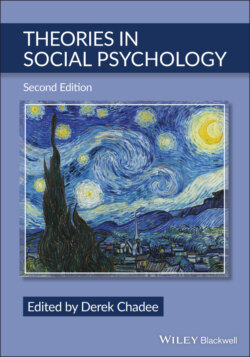Читать книгу Theories in Social Psychology - Группа авторов - Страница 19
Social Influence
ОглавлениеReactance is also a function of pressure to comply (social influence), varying from subtle to outright attempts to achieve compliance. A consequence of social influence is its eroding effect on an individual’s effort to exert influence in a social setting. For example, Brehm and Sensenig (1966) argue that social influence that leads to the usurpation of choice, especially when we are aware of our freedom to make a particular choice, will arouse reactance, resulting in rejection of the source of the social influence. Their study showed that the continuing evaluation of perception of threat was a function of the magnitude of reactance and inclination toward the denunciation of the social influence.
How does reactance or compliant behavior influence regret? Crawford et al. (2002) assess the relationship among reactance, compliance, regret, and persuasive attempts at changing behavior. In assessing anticipated regret, the study found that individuals were more likely to estimate higher regret for any loss if reactant behavior rather than compliance was likely to be displayed to a persuasive attempt. However, in actuality, in an attempt to reduce anticipated regret, individuals were more likely to engage in complying behavior to a request. In fact, individuals displaying anticipated regret and compliant behavior, as against persons displaying reactant behavior, actually experienced higher regret. The authors argue that compliant behavior is associated with dependency, and attribution of blame is externalized, compared to reactance behavior, which involves an independent choice. The reactant person assumes responsibility for their behavioral choice. Another study found that reactance was greater when attempts were made to control or change thoughts and attitudes than behavior, as attempts to control thoughts may have been seen as an initial step toward behavioral control (Ma et al., 2019).
Silvia (2005) assesses the relationship between interpersonal interaction, similarity, and psychological reactance. Similarity between interacting parties reduces resistance and enhances compliance in that similarity increases attraction and liking, which in turn leads to the threatening behavior of liked persons being interpreted as less coercive.
The findings of this study suggest that reactance is more likely to be aroused when a message that is threatening emanates from a dissimilar other. However, when the communicator of a threatening message was similar, persuasion occurred as though the message was not threatening (a normal message). Similarity as a positive interaction factor intervened in influencing compliance and reducing resistance which the threatening message aroused. The findings also suggest that positive social influence can reduce the magnitude of reactance even in a threatening situation. In this study, the researcher created similarity by use of identical first names, dates of birth, and congruent values of communicator-participants.
Resistance can be used to reestablish one’s sense of freedom via a freedom-affirmation intervention. Heilman and Toffler (1976) studied the reaffirming of freedom, assessing the relationship among message (threat or promise), option (no choice or choice option), and interpersonal interaction (interpersonal or non-interpersonal). The research found that compliance was higher in threatening situations when a choice was available, and both threats and promises were equally effective in obtaining compliance in a choice situation.
An important factor in the interpretation of a threatening situation is the degree of interpersonal interaction. Overall, the greater the interpersonal interaction, the greater is the compliance. However, an important finding of the study was the fact that though liking (interpersonal concern) was not the only variable that induced compliance, it moderated responses to freedom reduction (reactance). Other studies have found that compliance increased with high autonomy support message (Ball, 2016) and awareness of freedom to choose (Guéguen, 2016). Reactance research assists in understanding compliance in therapy (Seibel & Dowd, 1999) and adopting coping strategies (Hajek & Veronika, 2021).
